Katy Ilonka Gero
A Design Space for Intelligent and Interactive Writing Assistants
Mar 26, 2024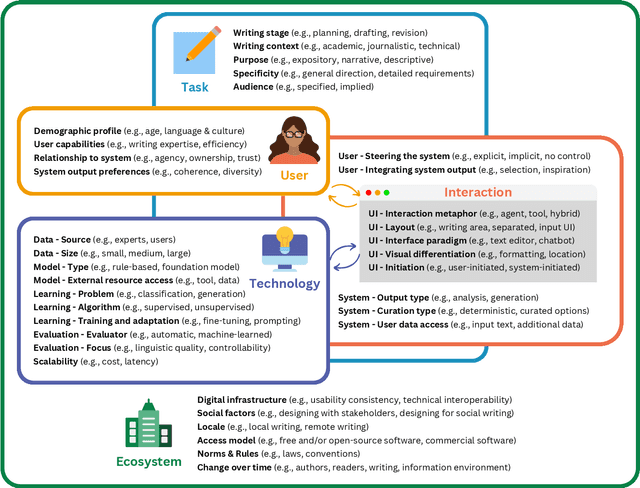
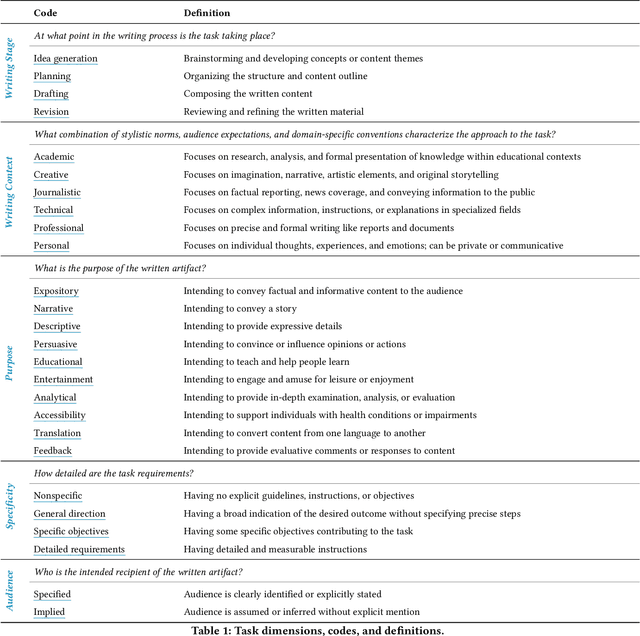
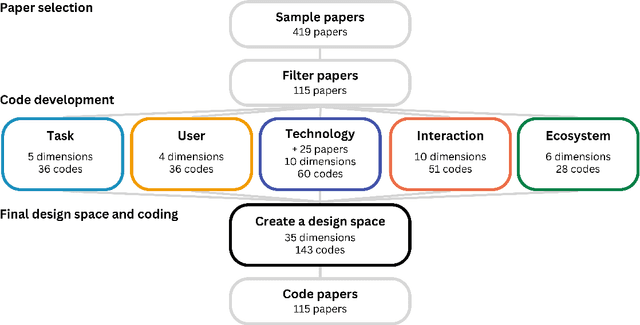
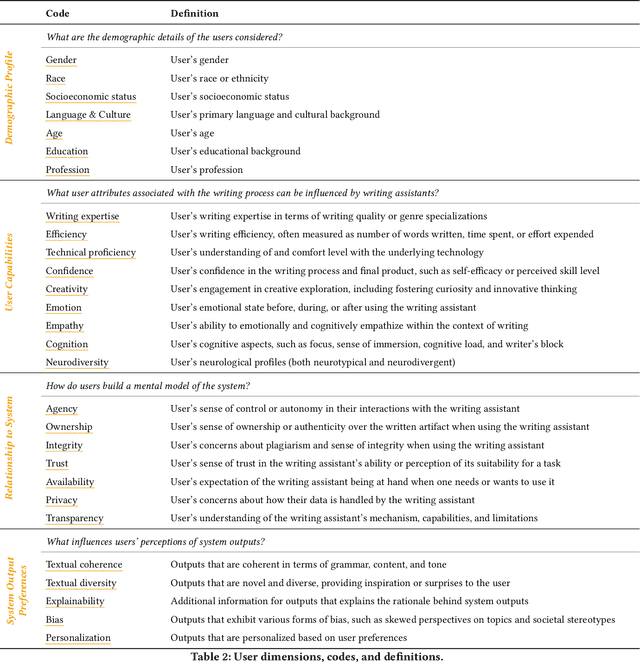
Abstract:In our era of rapid technological advancement, the research landscape for writing assistants has become increasingly fragmented across various research communities. We seek to address this challenge by proposing a design space as a structured way to examine and explore the multidimensional space of intelligent and interactive writing assistants. Through a large community collaboration, we explore five aspects of writing assistants: task, user, technology, interaction, and ecosystem. Within each aspect, we define dimensions (i.e., fundamental components of an aspect) and codes (i.e., potential options for each dimension) by systematically reviewing 115 papers. Our design space aims to offer researchers and designers a practical tool to navigate, comprehend, and compare the various possibilities of writing assistants, and aid in the envisioning and design of new writing assistants.
Not Just Novelty: A Longitudinal Study on Utility and Customization of AI Workflows
Feb 15, 2024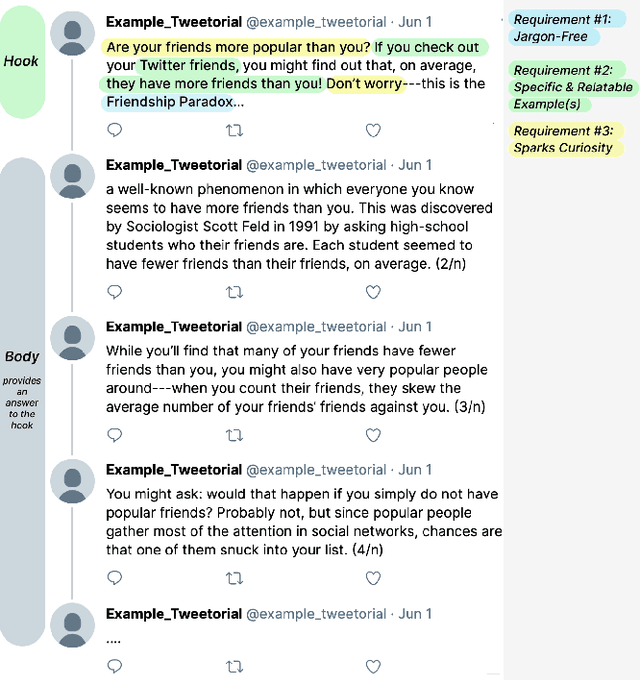
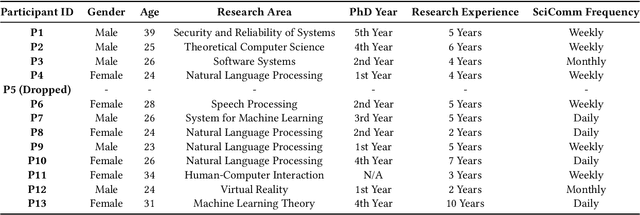

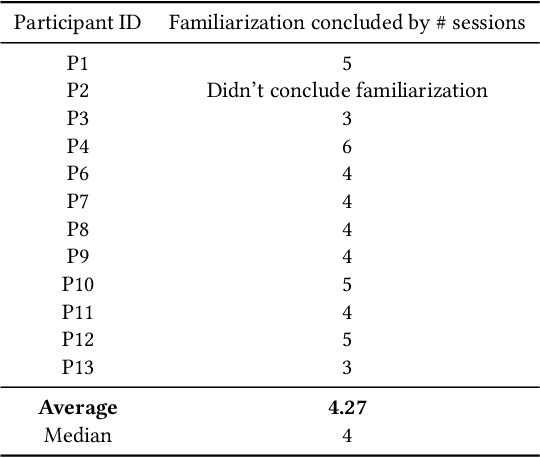
Abstract:Generative AI brings novel and impressive abilities to help people in everyday tasks. There are many AI workflows that solve real and complex problems by chaining AI outputs together with human interaction. Although there is an undeniable lure of AI, it's uncertain how useful generative AI workflows are after the novelty wears off. Additionally, tools built with generative AI have the potential to be personalized and adapted quickly and easily, but do users take advantage of the potential to customize? We conducted a three-week longitudinal study with 12 users to understand the familiarization and customization of generative AI tools for science communication. Our study revealed that the familiarization phase lasts for 4.3 sessions, where users explore the capabilities of the workflow and which aspects they find useful. After familiarization, the perceived utility of the system is rated higher than before, indicating that the perceived utility of AI is not just a novelty effect. The increase in benefits mainly comes from end-users' ability to customize prompts, and thus appropriate the system to their own needs. This points to a future where generative AI systems can allow us to design for appropriation.
Supporting Sensemaking of Large Language Model Outputs at Scale
Jan 24, 2024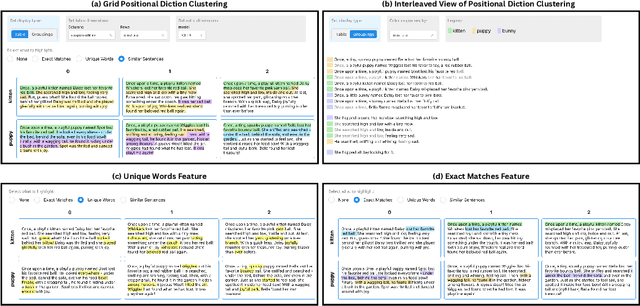
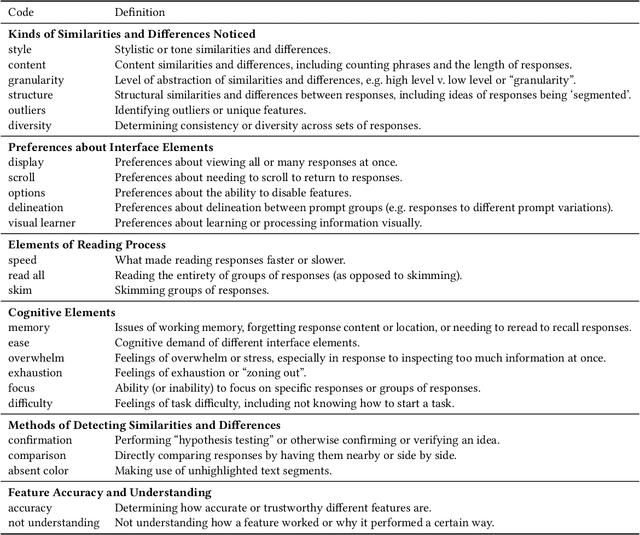


Abstract:Large language models (LLMs) are capable of generating multiple responses to a single prompt, yet little effort has been expended to help end-users or system designers make use of this capability. In this paper, we explore how to present many LLM responses at once. We design five features, which include both pre-existing and novel methods for computing similarities and differences across textual documents, as well as how to render their outputs. We report on a controlled user study (n=24) and eight case studies evaluating these features and how they support users in different tasks. We find that the features support a wide variety of sensemaking tasks and even make tasks previously considered to be too difficult by our participants now tractable. Finally, we present design guidelines to inform future explorations of new LLM interfaces.
Tweetorial Hooks: Generative AI Tools to Motivate Science on Social Media
May 20, 2023Abstract:Communicating science and technology is essential for the public to understand and engage in a rapidly changing world. Tweetorials are an emerging phenomenon where experts explain STEM topics on social media in creative and engaging ways. However, STEM experts struggle to write an engaging "hook" in the first tweet that captures the reader's attention. We propose methods to use large language models (LLMs) to help users scaffold their process of writing a relatable hook for complex scientific topics. We demonstrate that LLMs can help writers find everyday experiences that are relatable and interesting to the public, avoid jargon, and spark curiosity. Our evaluation shows that the system reduces cognitive load and helps people write better hooks. Lastly, we discuss the importance of interactivity with LLMs to preserve the correctness, effectiveness, and authenticity of the writing.
Lightweight Decoding Strategies for Increasing Specificity
Oct 22, 2021
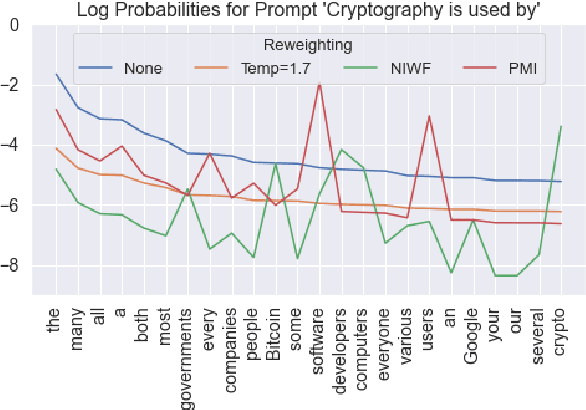


Abstract:Language models are known to produce vague and generic outputs. We propose two unsupervised decoding strategies based on either word-frequency or point-wise mutual information to increase the specificity of any model that outputs a probability distribution over its vocabulary at generation time. We test the strategies in a prompt completion task; with human evaluations, we find that both strategies increase the specificity of outputs with only modest decreases in sensibility. We also briefly present a summarization use case, where these strategies can produce more specific summaries.
Sparks: Inspiration for Science Writing using Language Models
Oct 14, 2021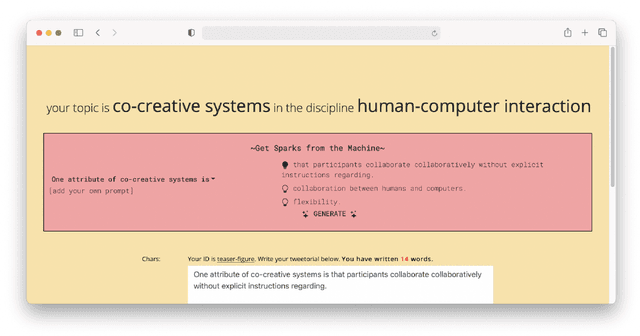
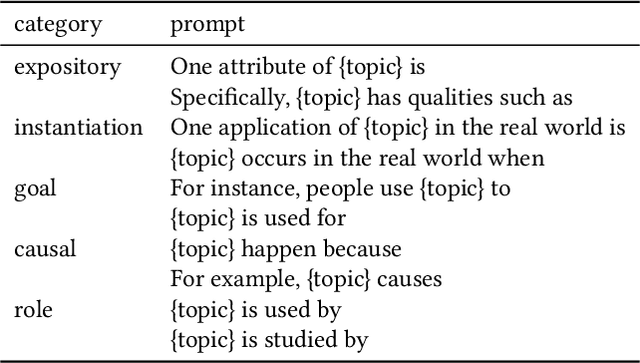
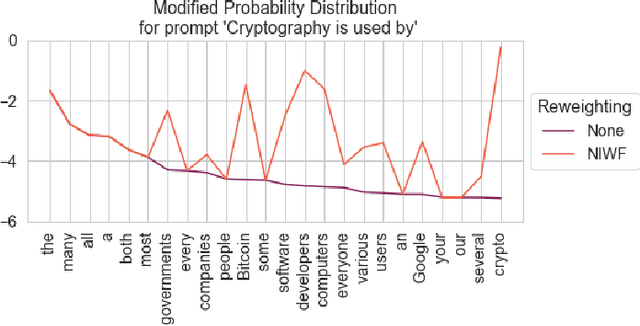

Abstract:Large-scale language models are rapidly improving, performing well on a wide variety of tasks with little to no customization. In this work we investigate how language models can support science writing, a challenging writing task that is both open-ended and highly constrained. We present a system for generating "sparks", sentences related to a scientific concept intended to inspire writers. We find that our sparks are more coherent and diverse than a competitive language model baseline, and approach a human-created gold standard. In a study with 13 PhD students writing on topics of their own selection, we find three main use cases of sparks: aiding with crafting detailed sentences, providing interesting angles to engage readers, and demonstrating common reader perspectives. We also report on the various reasons sparks were considered unhelpful, and discuss how we might improve language models as writing support tools.
 Add to Chrome
Add to Chrome Add to Firefox
Add to Firefox Add to Edge
Add to Edge